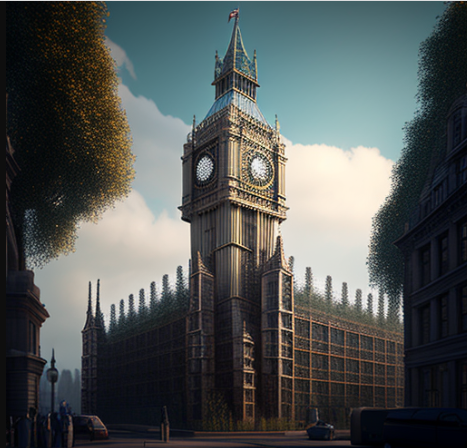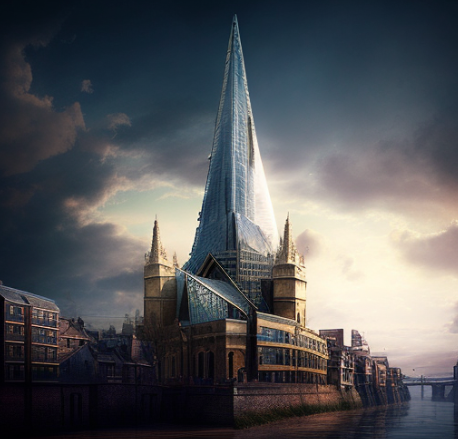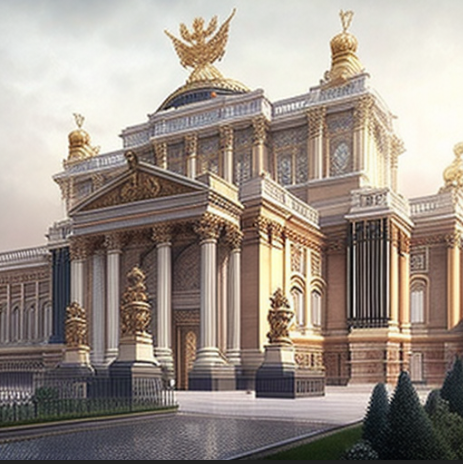The property experts at GetAgent used AI technology to imagine what some of the world’s most iconic buildings would look like re-designed in popular architectural styles.
Using the AI tool Midjourney, the property experts created images of world-famous buildings – from Buckingham Palace to the Parthenon – to reveal what they would look like if they’d been built in alternative architectural styles.
As part of the study, researchers also analysed Google search data to reveal the architectural styles homeowners are searching for most, from Bauhaus, a German art school operational from 1919 to 1933 that combined crafts and the fine arts, to Industrial.
The Most Famous Buildings in the UK, Redesigned
From Big Ben and Buckingham Palace, to The Shard – some of the world’s most iconic buildings can be found in the capital city of the UK.
The oldest of the buildings, Buckingham Palace, was built in 1703 and is loved by millions around the world as it was the Queen’s official residence for much of her reign, and continues to be a major landmark for Royal Family events in the UK. The palace was built with a Baroque architectural style, with influences of Rococo and Neoclassical styles, however the royal residence has been re-imagined with a Byzantine architectural style, characterised by the added dome on the top, iconography throughout, and marble and gold flourishes.
Big Ben, originally built in a Gothic Revival architectural style in 1859, has been re-designed in an Industrial architecture, with AI technology decorating the building with exposed materials and minimalist aesthetics. Finally, The Shard which was built in 2009, cost around £435 million to build and was designed by famed architect Renzo Piano. The AI-designed image shows what the iconic building would look if designed in Renaissance architecture, known for its use of arches, columns and symmetry.
The Most Famous Buildings in the US and Australia, Redesigned
Globally, buildings including the Empire State Building, White House and Sydney Opera House were also re-imagined, showing just how different some of the world’s most recognisable structures could look if they were designed differently.
The Empire State Building, originally built with an Art Deco architectural style was re-designed in a Greek Revival style, characterised by a focus on symmetry and columns. The White House, designed by architect James Hoban in the neoclassical style, was re-imagined as built in a Victorian style with characteristic flourishes including gabled roofs, round angles and shapely windows.
In Australia, the Sydney Opera House which was built in 1959, has been redesigned as if it was built over three hundred years earlier in the Tudor architectural style, as depicted by its half-timber work, grouped windows and steep gable roofing.
Other buildings which were re-designed using AI included the Eiffel Tower designed in Rococo architecture, La Sagrada Familia in Contemporary styles and The Forbidden City re-imagined in a Neoclassical architectural style.
Top Ten Most Popular Architectural Styles in 2023
To find out the types of architecture which homeowners are searching for most when looking for a new property, the research also analysed Google search data, revealing that Modern architecture is the most popular with a total of almost 5.2 million searches for homes designed in the modern architectural style. Victorian architecture, which refers to styles that emerged during Queen Victoria’s reign from 1837 to 1901, followed in second position with just over 1.5 million searches. Rounding off the top three was Gothic architecture, with just over one million people searching for homes designed in the style, which is characterised by pointed arches, ornate decorations and even stained glass windows.
Other types of architecture which featured in the top ten included Contemporary architecture – the architecture of the 21st century in which no single style is dominant – and Cape Cod architecture, which is one of the most easily recognisable styles of American architecture and characterised by rectangular silhouettes and steep roofs.
Placing just outside of the top ten were more intricate building styles, including Byzantine, Rococo and Neoclassical architecture, all with less than 200,000 searches a year for homes designed in these styles.
| Rank | Architecture type | Global annual average searches |
| 1 | Modern architecture | 5,194,800 |
| 2 | Victorian architecture | 1,545,840 |
| 3 | Gothic architecture | 1,052,400 |
| 4 | Brutalist architecture | 928,560 |
| 5 | Tudor architecture | 805,800 |
| 6 | Contemporary architecture | 713,760 |
| 7 | Art Deco architecture | 388,320 |
| 8 | Baroque architecture | 348,840 |
| 9 | Cape Cod architecture | 344,400 |
| 10 | Renaissance architecture | 290,280 |
Colby Short, Co-Founder and CEO of GetAgent comments, “It’s been really interesting to use AI technology to reveal what would happen if some of the world’s most recognisable buildings were designed in architectural styles from different times and cultures.
For some buildings, the architectural style can be found in the small decorative details, whereas for others, AI technology has shown us how the whole structure of a building could look different if it was built in a different style, century, or country.
The architectural style your house is built in can have an effect on how quickly it could sell, with building trends changing all the time amongst house-hunters. Some older styles of architecture can bring with it more character, which can appeal to many house-buyers, however this can also come with reduced functionality of a property, or an inefficient use of space.
If you’re thinking about putting your property on the market, consider whether the architectural style your property was built in is providing both charm and practicality for future owners – and make any necessary improvements before putting your house up for sale.”








